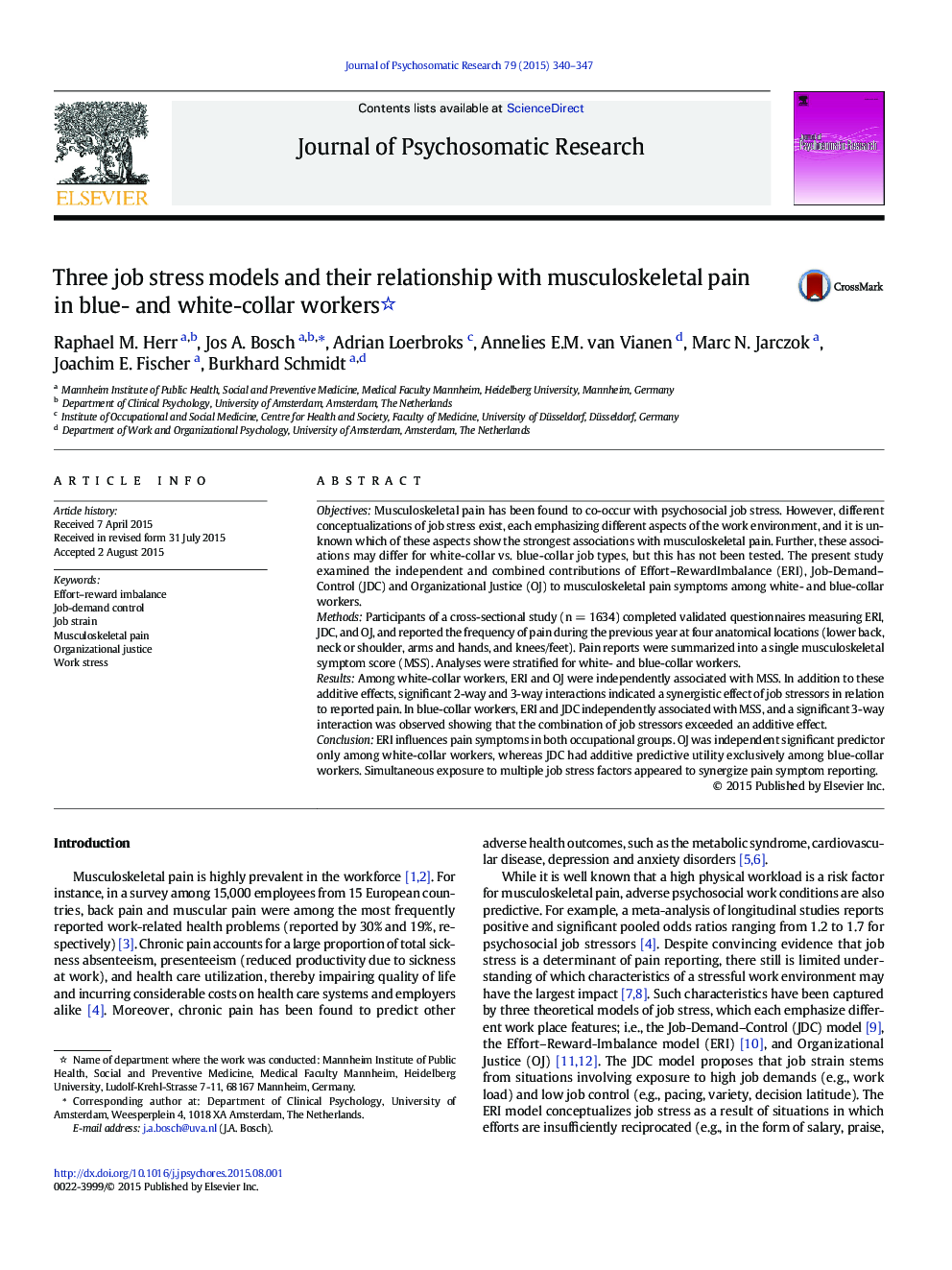| کد مقاله | کد نشریه | سال انتشار | مقاله انگلیسی | نسخه تمام متن |
|---|---|---|---|---|
| 949412 | 926746 | 2015 | 8 صفحه PDF | دانلود رایگان |
• Combinations job stressors were differentially related to pain in white- and blue-collar worker
• The presence of multiple job stressors increased pain additively and synergistically
• Future interventions may take both occupational group and job stressor type into account
ObjectivesMusculoskeletal pain has been found to co-occur with psychosocial job stress. However, different conceptualizations of job stress exist, each emphasizing different aspects of the work environment, and it is unknown which of these aspects show the strongest associations with musculoskeletal pain. Further, these associations may differ for white-collar vs. blue-collar job types, but this has not been tested. The present study examined the independent and combined contributions of Effort–RewardImbalance (ERI), Job-Demand–Control (JDC) and Organizational Justice (OJ) to musculoskeletal pain symptoms among white- and blue-collar workers.MethodsParticipants of a cross-sectional study (n = 1634) completed validated questionnaires measuring ERI, JDC, and OJ, and reported the frequency of pain during the previous year at four anatomical locations (lower back, neck or shoulder, arms and hands, and knees/feet). Pain reports were summarized into a single musculoskeletal symptom score (MSS). Analyses were stratified for white- and blue-collar workers.ResultsAmong white-collar workers, ERI and OJ were independently associated with MSS. In addition to these additive effects, significant 2-way and 3-way interactions indicated a synergistic effect of job stressors in relation to reported pain. In blue-collar workers, ERI and JDC independently associated with MSS, and a significant 3-way interaction was observed showing that the combination of job stressors exceeded an additive effect.ConclusionERI influences pain symptoms in both occupational groups. OJ was independent significant predictor only among white-collar workers, whereas JDC had additive predictive utility exclusively among blue-collar workers. Simultaneous exposure to multiple job stress factors appeared to synergize pain symptom reporting.
Journal: Journal of Psychosomatic Research - Volume 79, Issue 5, November 2015, Pages 340–347
